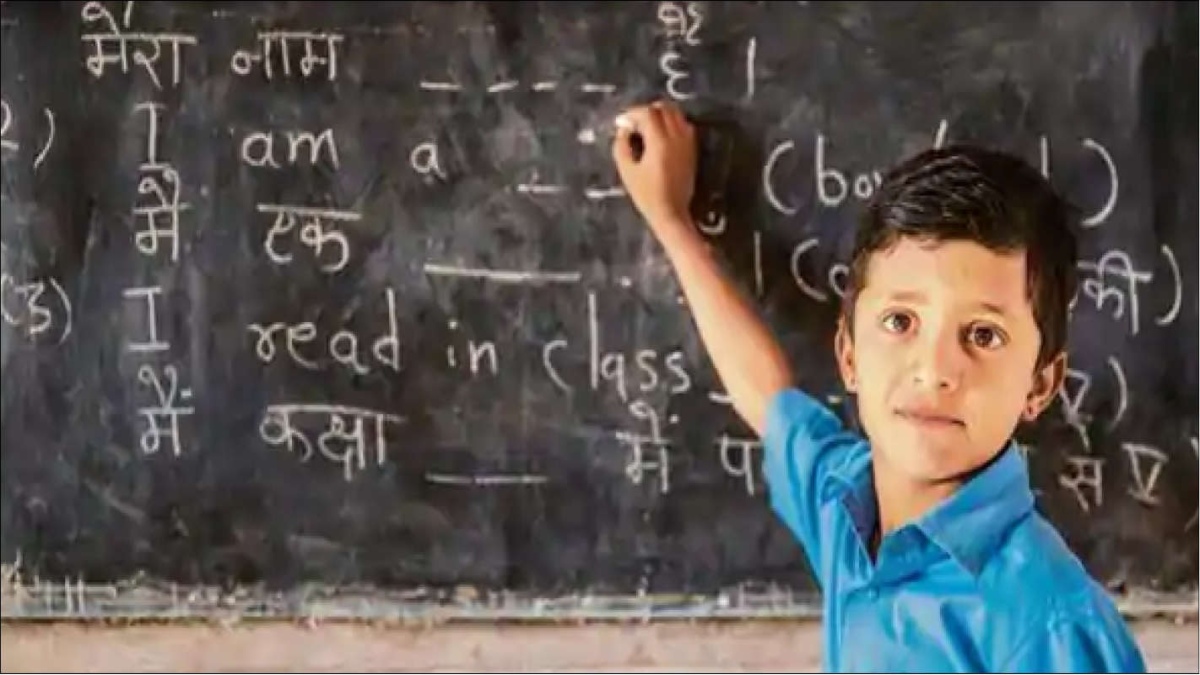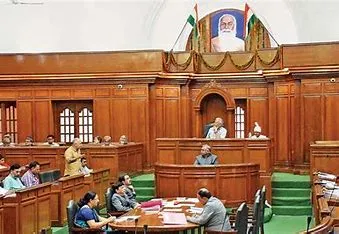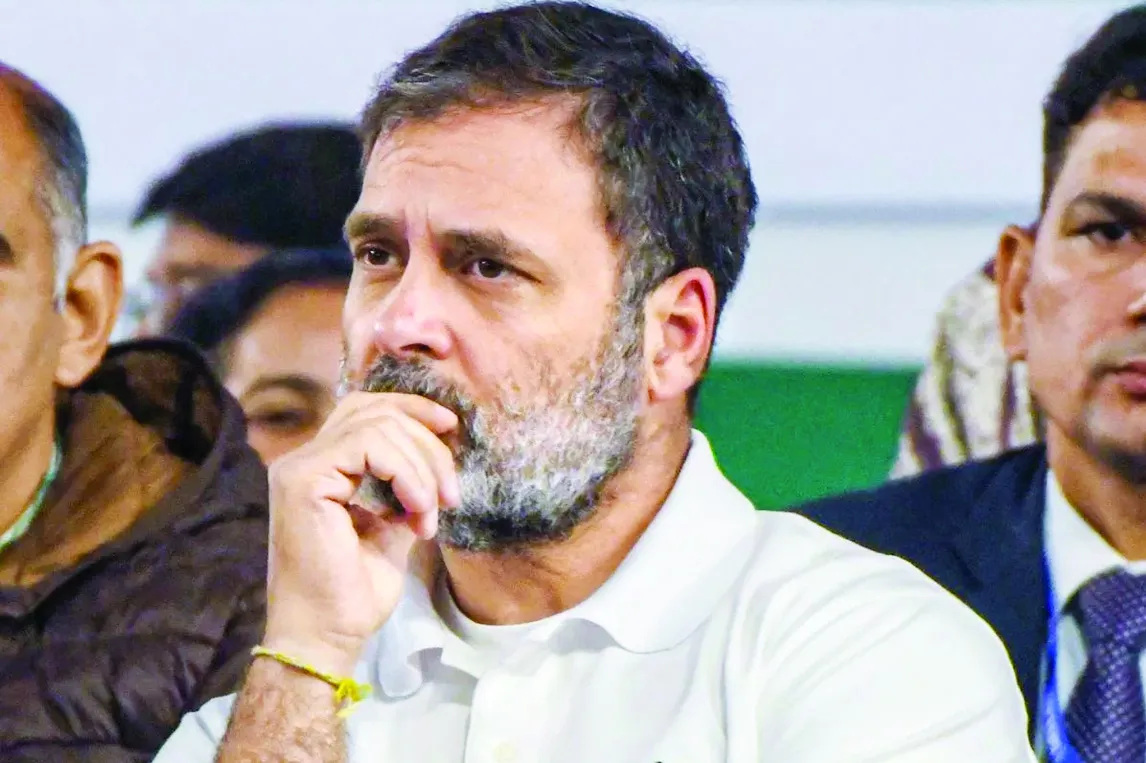The new National Education Policy (NEP) 2020, prepared under Prime Minister Narendra Modi’s mentorship and the guidance of Education Minister Ramesh Pokhriyal ‘Nishank’, is a charter with a historic vision. It has far-reaching national and international ramifications, particularly for the future of Indian education, and for building an Aatmanirbhar Bharat or self-reliant India. Whether it is for employment or social justice, research and development, or the development of Indian languages, the recommendations of the NEP 2020 are highly progressive in nature. It contains many important features pertaining to the development of Indian languages, however, some need to be reconsidered in larger national interest.
Emphasis on Indian languages is a major feature of the NEP. The foundational ‘Principles of this Policy’ mentioned in the introduction of the NEP includes «promoting multilingualism and the power of language in teaching and learning». In view of this principle, emphasis has been laid on the ‹Teaching of Indian languages› as well as ‹Teaching in Indian languages› from school to higher levels. An important recommendation in this context is that schooling up to at least the fifth grade will be done in one’s mother tongue or local/regional language. This can be extended further till the eighth grade. This significant incorporation in the NEP 2020 is in line with educational psychology’s research and the 2008 UNESCO report, both of which underscore that learning in one’s mother tongue is easy since communication and cognition happen easily and quickly. The child understands in the mother tongue or the local language, whereas in other languages, he crams.
It is not without reason that in developed countries, schooling is done in the mother tongue or local language. In fact, even higher education is imparted, usually, in the language of that country. Keeping in mind this significance of ‘desi’ (native) languages as the medium of education as well as the lingual proficiency status of the common people, the NEP also advocates for higher education in Indian languages. The policy says that all Higher Education Institutions (HEIs) would “develop more degree courses taught in Indian languages and bilingually”.
In a welcome move, regarding the implementation of these provisions, it has been announced recently after a meeting chaired by the Education Minister that some of the Indian Institutes of Technology (IITs) and National Institutes of Technology (NITs) will start offering engineering courses in mother tongues from the 2021-22 academic session. The Jawaharlal Nehru University (JNU) is also likely to offer non-technical courses in regional languages soon. In addition to this, as per the spirit of the NEP, it has been announced that the IIT-JEE Main examination would be conducted in nine regional languages in 2021, besides Hindi and English.
Apart from this, “to make high-quality learning materials and other important written and spoken material in various Indian languages, an Indian Institute of Translation and Interpretation (IITI) will be established”. It’s good to know that a committee has already been formed by the government to implement this provision. In addition to this, to boost the languages (along with the literature, art and culture associated with them) mentioned in the Eighth Schedule of the Constitution of India, ‘academies’ will be established. Besides this, special efforts will be directed to preserve and promote tribal and endangered languages with the help of technology. These efforts most certainly will prove to be milestones in the strengthening of Indian languages and culture.
The three language formula (TLF), emphasizing Indian languages and multilingualism, is another great feature of the NEP 2020. The proposed TLF, with greater flexibility, is slightly different from the preceding TLF. In NEP 1986, TLF provided for the study of an Indian language, preferably one of the Southern languages, apart from Hindi and English, in the Hindi-speaking states (HSS), and of the regional languages along with Hindi and English in the non-Hindi-speaking states (NHSS). In view of the controversies due to the vested interests in states like Tamil Nadu, TLF in NEP 2020 was made a bit flexible by proposing that two Indian languages will be taught. No specific language was mentioned for it. In practical terms, what will happen is that in most of the NHSS, along with English and the principal regional language of that state, there will be another Indian language (third language), barring a few exceptions. It would most likely be Hindi, considering the national importance of Hindi from the points of view of trade, employment and its country-wide utility. On the other hand, besides Hindi and English, Sanskrit will be taught as another Indian language (third language) in HSS, as has been usual so far.
This situation, however, is not satisfactory in terms of national integration, as the students of HSS will never move to learn other modern Indian languages. Tamil Nadu and other NHSS will continue to hold the grudge that HSS people don’t learn NHSS’s languages, which is not a good situation for national unity and integrity. It is my firm belief that under TLF, both Indian languages must be «modern Indian languages», other than Sanskrit. The HSS must adopt one of the languages of any other NHSS, instead of Sanskrit as the third language in TLF. It must be reiterated that in the NEP 1968 or NEP 1986, when TLF was accepted, the spirit behind it was that the children of the HSS will study a regional language as the third language, preferably a South Indian language. One of the reasons in the past for not considering the option of regional languages as the third language in HSS was probably the non-availability of teachers for these languages. But in the current era of technology, the solution to this problem has become quite easy, especially through the new system of online learning where teaching these languages won’t be difficult. The Ministry of Education’s website, ‹SWAYAM›, and the television channel ‹Swayam Prabha› can also be utilised in this regard. Even the NEP talks of the “extensive use of technology in teaching and learning, removing language barriers” in its basic principles. With this one modification in TLF, not only will young learners of our HSS get an opportunity to learn the language and culture of other states of the country, but it will also strengthen a sense of national unity and integrity. At the same time, this will also address the fear of the NHSS that their languages will disappear and the dominance of Hindi will be established. Besides this, narrow-minded politicians will also not get a chance to provoke any language-based politics.
As far as Sanskrit is concerned, not even an iota of doubt should be there that the knowledge of Sanskrit is necessary. It is required not only to understand the rich and glorious ancient Indian culture and society, but Sanskrit also has an important status as the link language connecting most of the Indian languages from north to south. It’s a welcome move that in chapter four of the NEP 2020, it is mentioned that Sanskrit and classical languages will be taught in schools for at least 2 years starting from Class VI. It’s also heartening that Sanskrit has been emphasised in higher education as well. In fact, considering the importance of Sanskrit, its study will be linked to other contemporary and relevant subjects such as mathematics, astronomy, philosophy, linguistics, medicine, architecture, metallurgy, drama, etc. In line with this point of the NEP, the Sanskrit University will move, rightly, towards becoming a large multi-disciplinary institution of higher education.
Another vital point of reconsideration in the NEP 2020 is related to the study of foreign languages. The NEP states that foreign languages will also be offered to students “to enrich their global knowledge and mobility according to their own interests and aspirations, at secondary level”. It would be better, however, if imparting of these foreign languages is done at the Bachelor’s level or Senior Secondary level, when one starts making up one’s mind about their career, rather than at the Secondary standard, as, in junior classes, a child doesn’t understand which foreign language s/he should study or how s/he can use it in the future. Moreover, on account of the lack of a lingual environment and use in daily life, children mostly forget these foreign languages.
Another concern with regard to foreign languages, besides this, is the non-inclusion of the Chinese language ‘Mandarin’ in the foreign languages mentioned in Para 4.20 of the NEP. This must be known that in the NEP draft of 2019, the Chinese language was categorically mentioned along with other foreign languages. Dropping the Chinese language from the NEP 2020 list is probably a response to China›s hostile behaviour in Ladakh this year. Keeping in mind the honour and pride of the nation, prima facie, it seems justified emotionally, because just like Chinese goods, the Chinese language must also be boycotted. But in national interest, we must remember here what the Chinese strategist Sun Tzu said: “Keep your friends close, and your enemies even closer”, that is, to deal with and win over the enemy, we must have every detail concerning it, i.e., a good understanding of its society, culture and collective psyche, for which the knowledge of its language is crucial. It is also requisite to note that in the US two decades ago, when terrorists attacked the country in September 2001 and dread started engulfing the world, Arabic language studies suddenly began to be emphasised in almost all American universities. To deal with China, taking a cue from the US, we must have a good knowledge of its language and culture. It is thus necessary that the linguistic policy makers think about this sooner than later.
As NEP 2020 has started rolling out, the above-mentioned suggestions with regard to languages must be considered in national interest.
The writer is a Professor in the Department of Hindi, University of Delhi and has taught earlier in various US universities. The views expressed are personal.






















